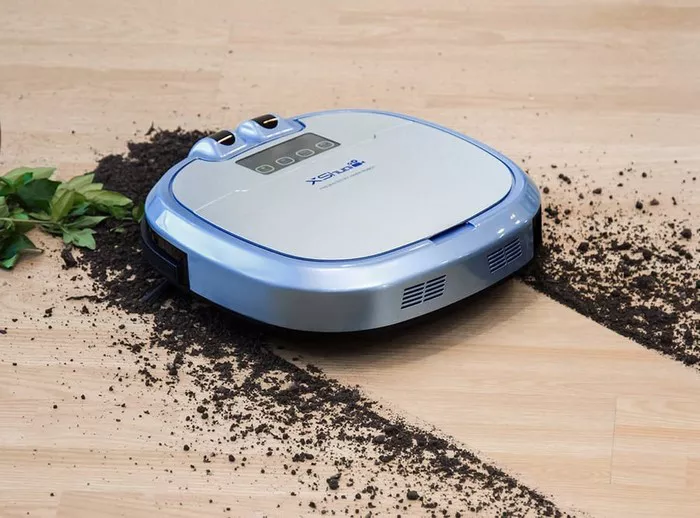Robot vacuum cleaners have revolutionized the way we maintain our homes, offering a convenient and efficient solution to daily cleaning tasks. These autonomous devices have surged in popularity due to their ability to navigate around furniture, under beds, and into tight corners, making household chores significantly easier. One common question among users and potential buyers is: “How big a piece of garbage can a robot vacuum cleaner clean?” This article delves into the factors that determine the size of debris these smart devices can handle and provides practical tips for optimizing their performance.
Factors Affecting Size of Debris
Suction Power
Suction power is a critical factor that influences the size of debris a robot vacuum can pick up. Measured in Pascals (Pa), this metric quantifies the vacuum’s ability to draw in air and, consequently, debris. Higher suction power means the vacuum can handle heavier and larger particles. For instance, entry-level robot vacuums typically offer around 1000-1500 Pa, which is adequate for dust, small crumbs, and pet hair. Mid-range models may provide between 2000-2500 Pa, allowing them to manage larger debris like rice or small cereal pieces. High-end models boasting 3000 Pa or more can tackle even larger items, such as small pebbles or larger chunks of food.
Brush Design
The design and configuration of the brushes also play a vital role in determining the size of debris a robot vacuum can clean. There are various types of brushes, including single brushes, double brushes, and rotating brushes, each with its specific advantages:
Single Brushes: These are generally less effective at handling large debris but are suitable for light cleaning tasks such as picking up dust and small particles.
Double Brushes: These provide better coverage and are more effective at gathering larger debris by working in tandem to lift and direct particles toward the intake.
Rotating Brushes: These are particularly adept at handling diverse types of debris, including larger items, due to their ability to sweep particles into the vacuum’s path efficiently.
See also: What is the Best Carpet Sweeper
Intake Size
The physical opening size, or intake, of the robot vacuum where debris enters is another crucial factor. A larger intake can accommodate bigger pieces of garbage. Standard robot vacuums usually have an intake width of around 15-20 millimeters (mm). This dimension limits the size of the debris they can handle; anything larger might get stuck or be bypassed altogether. Premium models might feature wider intakes, enhancing their capability to manage more substantial debris.
Debris Size Limits
Under ideal conditions, most robot vacuums can handle debris ranging from 5 to 20 millimeters in size. This range covers a variety of common household messes, including:
Pet Hair and Crumbs: These are typically light and small, making them easy for most robot vacuums to manage.
Small Cereal Pieces and Rice: With sufficient suction power and appropriate brush design, these slightly larger items are within the cleaning capacity of mid-range to high-end models.
Leaves and Small Pebbles: These represent the upper limit of what most robot vacuums can handle, often requiring the highest suction power and optimal brush configuration.
It’s essential to understand that while robot vacuums are highly capable, they are not designed to replace traditional vacuums for handling very large or heavy debris.
Tips for Optimal Performance
Regularly Empty the Dustbin
To maintain optimal suction power, it’s crucial to regularly empty the robot vacuum’s dustbin. A full dustbin can significantly reduce the device’s ability to pick up debris, leading to decreased performance. Establishing a routine for checking and emptying the dustbin can ensure that your robot vacuum operates at peak efficiency.
Adjustable Suction Power
Some advanced robot vacuums come with adjustable suction power settings, allowing users to increase the suction for more challenging cleaning tasks. This feature can be particularly useful for handling larger debris or heavily soiled areas. Adjusting the suction power according to the task at hand can maximize cleaning effectiveness.
Preventing Tangles
Long hair, cords, and other similar items can easily get tangled in the brushes, leading to maintenance issues and reduced performance. Keeping such items away from the cleaning area or manually removing them from the path of the robot vacuum can prevent these tangles. Additionally, some models are equipped with anti-tangle technology, which can help mitigate this issue.
See also: Which is the Best Industrial Vacuum Cleaner
Optional Inclusions
| Model | Suction Power (Pa) | Intake Width (mm) | Brush Type | Debris Size Limit (mm) |
|---|---|---|---|---|
| Basic Model | 1000-1500 | 15 | Single | 5-10 |
| Mid-Range Model | 2000-2500 | 17 | Double | 10-15 |
| High-End Model | 3000+ | 20 | Rotating | 15-20 |
Note: The above table provides a comparison of various robot vacuum models based on their suction power, intake width, brush type, and the corresponding debris size limit.
Conclusion
Robot vacuum cleaners have become an indispensable tool for maintaining clean homes with minimal effort. The size of debris they can handle depends on several factors, including suction power, brush design, and intake size. Most robot vacuums can effectively clean debris ranging from 5 to 20 millimeters, making them suitable for everyday messes like dust, crumbs, and small pieces of food. Regular maintenance, such as emptying the dustbin and adjusting suction power, can further enhance their performance.
In summary, while robot vacuums are not a one-size-fits-all solution for every type of debris, they are remarkably efficient at managing common household messes. Their ability to navigate autonomously and clean various surfaces makes them a valuable addition to any home. With the right care and usage, robot vacuums can significantly reduce the burden of daily cleaning chores, leaving your floors spotless with minimal effort.

